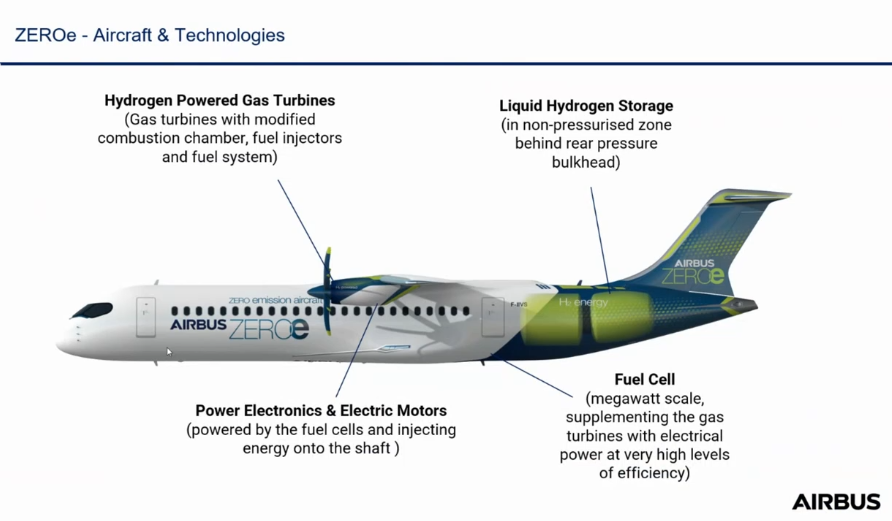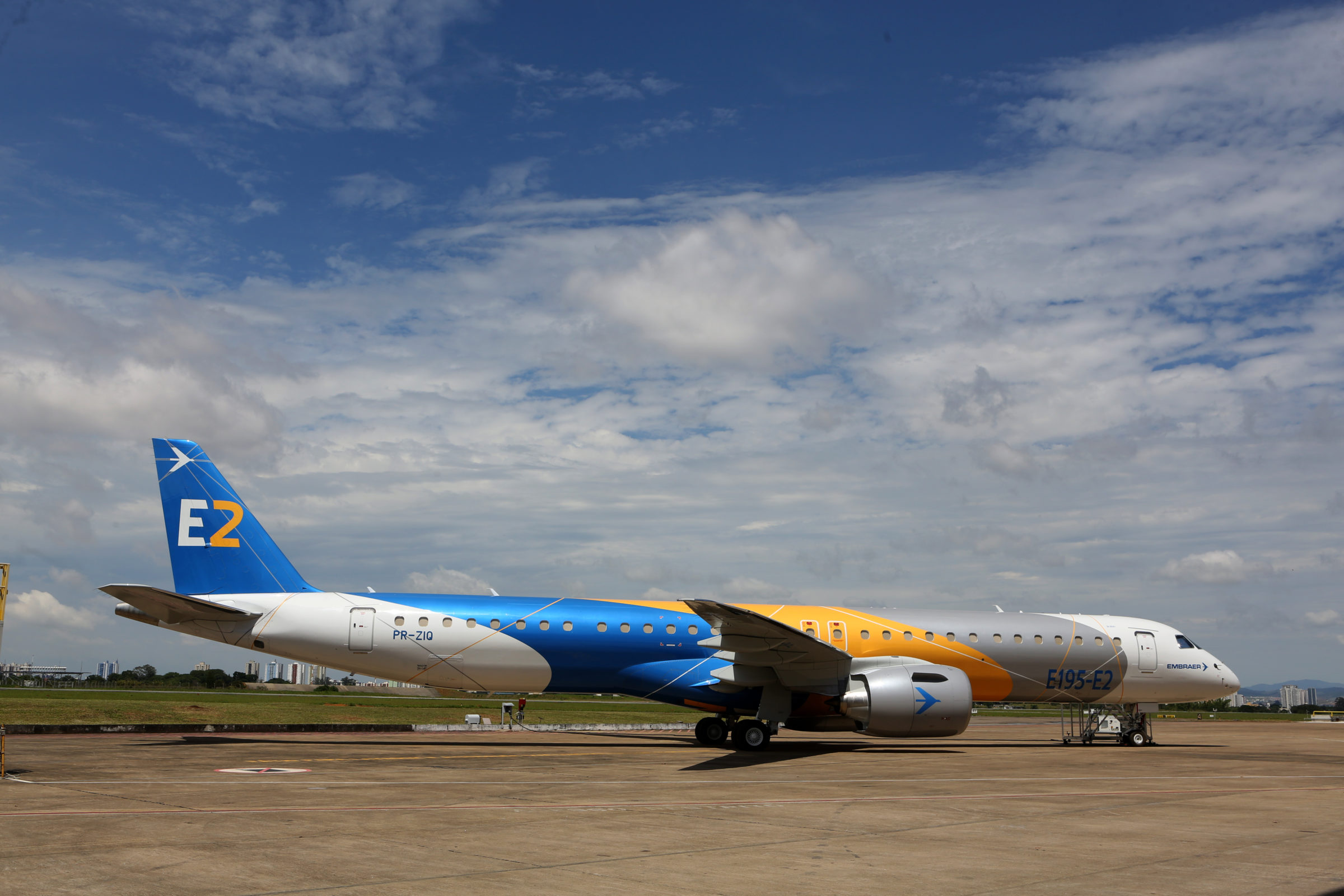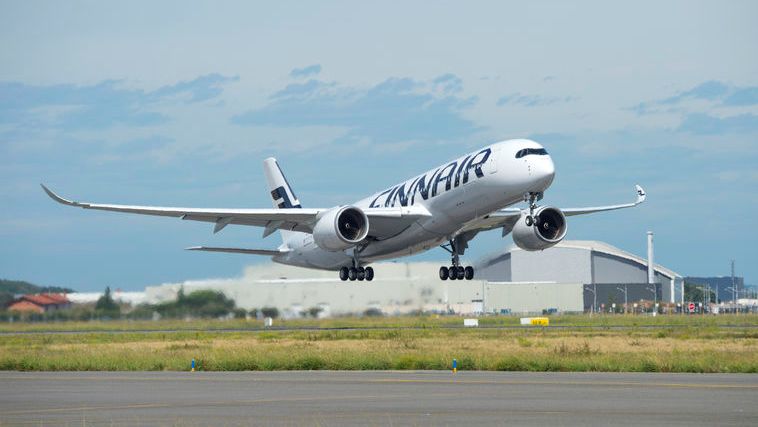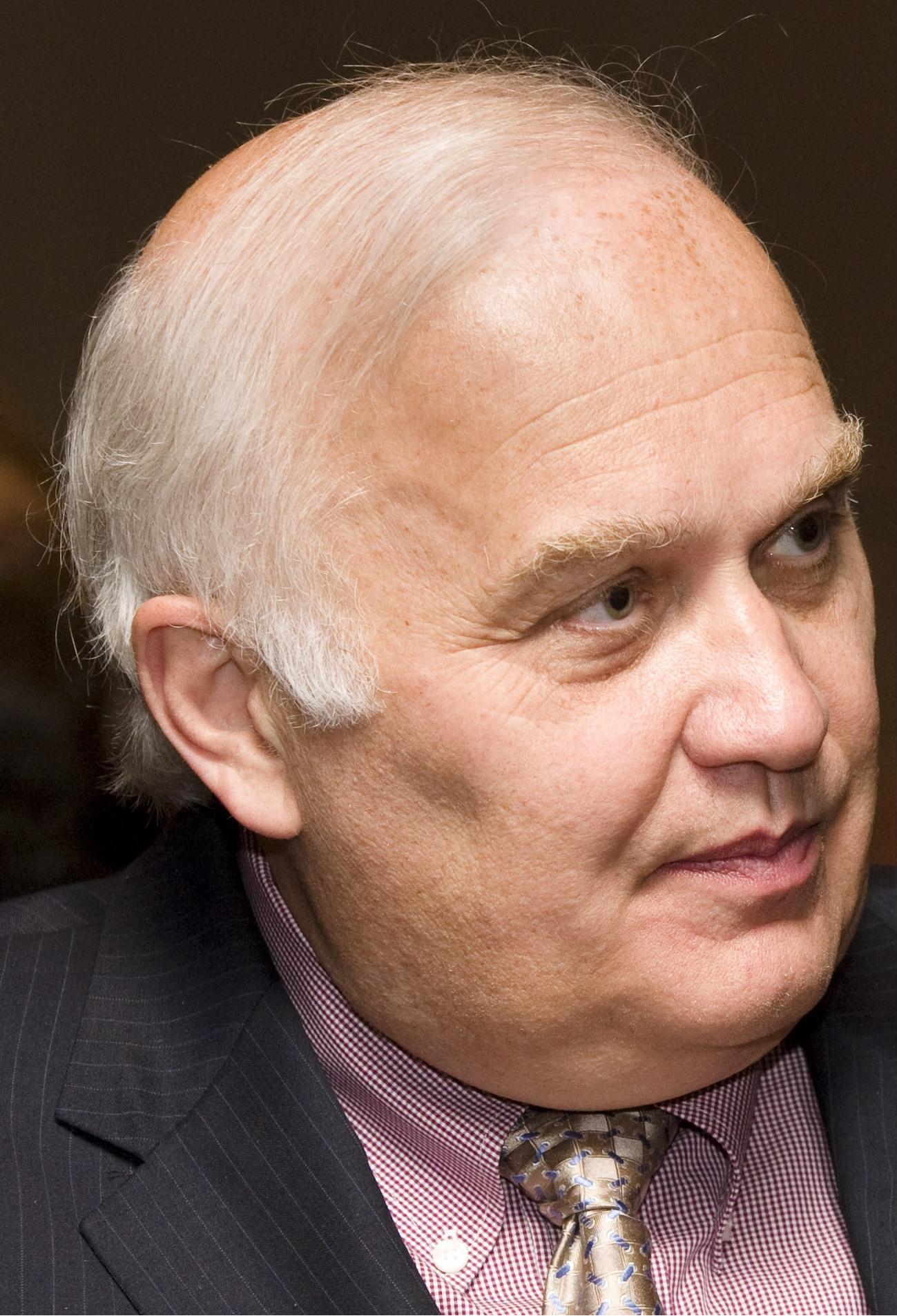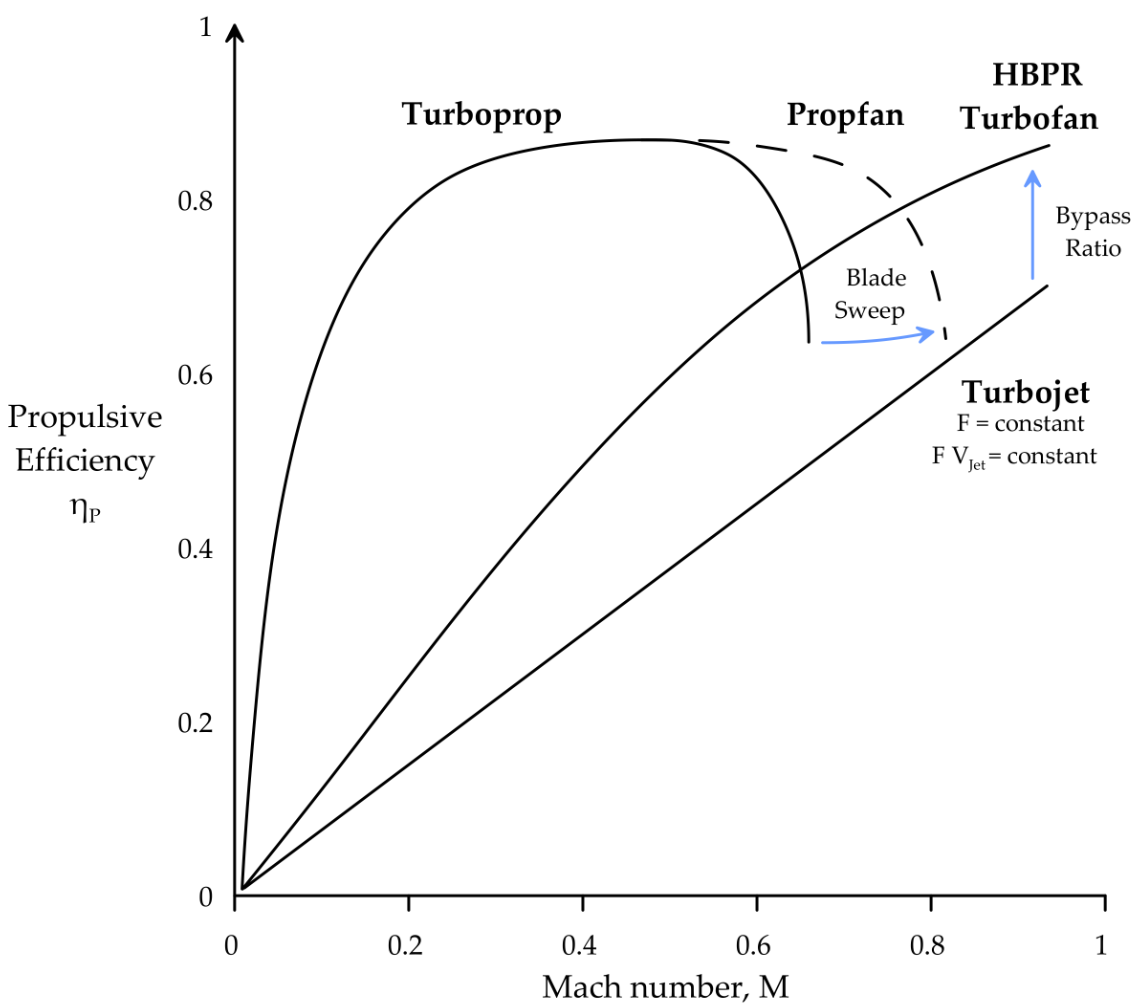Leeham News and Analysis
There's more to real news than a news release.
Bjorn’s Corner: Sustainable Air Transport. Part 17. Gas Turbine Propulsion
April 29, 2022, ©. Leeham News: Last week, we looked at the thrust generating device that aircraft propulsion systems use. We could conclude that independent of how we create the shaft power, we can choose different thrust technologies with desired characteristics. A propeller, open fan, or fan in nacelle covers different speed ranges and efficiency profiles.
Now we look at how we generate the shaft power for these devices. We start with the hydrogen-burning gas turbine alternative.
Embraer 1Q2022 results; lower deliveries as Commercial aircraft division is re-integrated
By Bjorn Fehrm
April 5, 2021, ©. Leeham News: Embraer presented its 1Q2022 results today. The airframer had lower deliveries for Commercial aircraft and Business jets than in the 1st quarter of last year after shutting down production in January to reintegrate the Commercial aircraft division.
Despite a lower revenue for the quarter, the EBITs were similar, and free cash flow usage was down as Embraer has trimmed its cost base. Sales were positive, and the backlog has grown to $17.3bn from $15.9bn 1Q2021. Profits before tax were -$32m compared with a -$90m a year ago. The company confirmed the 2022 guidance.
Impact of Russian Airspace Closure on Finnair
Subscription Required
By Bjorn Fehrm
Introduction
April 28, 2022, © Leeham News: Last week, we started an article series that looks at the impact of the closure of the Russian airspace for Western airlines.
We start with analyzing how Finnair’s cost base changes as it routes Helsinki to Tokyo has to fly over the north pole and then down to Tokyo instead of over Russia. How will this affect the airline’s costs and the payload carrying capacity of the aircraft?
Summary
- The costs for Finnair on the route increase significantly.
- Part of this increase is increased fuel prices, affecting all airlines. Others are tied to avoiding Russian airspace.
All Air Lease Corp’s single-aisle airplanes are delayed
By Laura Mueller
Airfinance Journal, April 14, 2022
Reprinted with permission
April 27, 2022, © Airfinance Journal: Air Lease Corp’s executive chairman, Steven Udvar-Hazy, told Airfinance Journal that “every one” of the lessor’s single-aisle Airbus aircraft is delayed.
“Our Boeing 737 Max deliveries also are delayed this year,” he said. “The supply chain, starting with the engine manufacturers, the people who make landing gear, the people who make avionics… are not equipped today to meet the production goals of the two manufacturers.”
Add in increased absenteeism and working from home, and it is clear further delays are ahead. “You can’t build airplanes on a Zoom call.”
The situation means Airbus and Boeing are “faced with very difficult strategies”.
ALC’s chief executive officer, John Plueger, echoed those thoughts. He told a JP Morgan conference on 16 March that 18% of the Airbus workforce was off due to Covid-related matters. Plueger confirmed to Airfinance Journal that Airbus told him that figure, but the information was “probably a month or two old” as of April.
“It would not surprise me to get further delays beyond that,” he added.
Boeing delays 777X first delivery delayed until 2025; posts $1.2 B loss in first quarter
UPDATED
April 27, 2022, © Leeham News: Boeing’s 777X program took another hit Wednesday, when the company said it won’t deliver the first 777-9 until 2025 due to new delays getting the plane certified. It has halted 777-9 production through 2023, which the company expects to incur $1.5 billion in abnormal costs until the assembly line starts moving again.
 The aerospace giant’s Q1 earnings report is soaked in red ink: a $1.2 billion net loss, a $3.6 billion loss in free cash flow and a $2.06 GAAP loss per share and a $2.75 core (non-GAAP) loss per share. The results fell far below the roughly 20 cents per share loss and $15 billion expected by Wall Street analysts.
The aerospace giant’s Q1 earnings report is soaked in red ink: a $1.2 billion net loss, a $3.6 billion loss in free cash flow and a $2.06 GAAP loss per share and a $2.75 core (non-GAAP) loss per share. The results fell far below the roughly 20 cents per share loss and $15 billion expected by Wall Street analysts.
The company said it has filed a 787 certification plan with federal regulators, as it tries to resume deliveries of its premier twin-aisle jetliner.
Boeing Defense booked more than $1 billion in charges from two programs–Air Force One replacement and T-7 Red Hawk trainer for the U.S. Air Force. Read more
AvWeek MRO Event: Kansas Mod lands first 777-300ER P2F order
April 26, 2022, © Leeham News: Kansas Modification Center/NIAR WERX won an order for three conversions from Boeing 777-300ER passenger aircraft to freighters from Backbone Freighter Leasing, an affiliation of Dr. Peters Group, a European lessor. Backbone also optioned seven conversions.
order for three conversions from Boeing 777-300ER passenger aircraft to freighters from Backbone Freighter Leasing, an affiliation of Dr. Peters Group, a European lessor. Backbone also optioned seven conversions.
This is the first order for KMC/NIAR WERX. The deal was announced today at the Aviation Week MRO Americas conference in Dallas. Deliveries are in 2024 and 2025. Options have delivery slots from 2025 through 2027. The airplanes are ex-Emirates Airline aircraft. The first plane entered flight testing for loads analysis Sunday.
KMC forecasts certification by the Federal Aviation Administration in the second quarter of 2024. This conversion features a forward cargo door as opposed to the aft door in conversions offered by IAI Bedek and Mammoth Freighters. IAI has orders for 22 conversions from EVA, Emirates and lessor AerCap (which inherited this deal from GECAS upon acquisition of this lessor). AerCap has options for 15 more conversions, also from GECAS. Entry into service with AerCap is scheduled for this year.
Mammoth has an order for two conversions from Canada’s CargoJet and options for three more. Mammoth says EIS is targeted for the second half of 2023, a timeline some believe is optimistic.
Airbus aggressively seeks to reduce corporate, industry emissions footprint
Subscription Required
By Scott Hamilton
April 25, 2022, © Leeham News: Airbus is charging ahead with its ZEROe ecoAviation research and development, focused on hydrogen (H2) power while supporting efforts for Sustainable Aviation Fuel in the meantime. Airbus targets 2035 for a commercial airliner, which will almost certainly be a turboprop—not a jet.
Boeing previously said it believes Sustainable Aviation Fuel (SAF) is the near-term answer for greening up commercial aviation. By 2030, all its aircraft will be capable of 100% SAF use. Airbus is heading down this path, too.
Airbus believes H2 is the best solution to achieving zero emissions. Battery-powered airplanes and eVTOLs and battery-hybrids are other alternatives. Each has big technical and/or supply challenges to overcome.
In a webinar last week, Amanda Simpson, VP of Research and Technology for Airbus, said designing an entirely new airplane for H2 opens the possibility of an entirely new, high-tech wing design for which other research has been underway. A “Wing of Tomorrow” has been under development for years. Airbus already is pursuing an UpNext eXtra Performance Wing. For shorthand, LNA will identify this as the UNePW.
Boeing appears finally on track to resume 787 deliveries
April 25, 2022, © Leeham News: Boeing appears on a path to resume deliveries of the 787 in the second half of this year.
Filings by American and United airlines with the US Securities and Exchange Commission show each carrier expects 787s later this year. And, according to a Reuters report, Boeing privately told the airlines and the supply chain that deliveries will resume in the second half.
Boeing declined comment.
A United 8-K filings (an unscheduled filing) indicate two deliveries in the third quarter and another four in the fourth quester. These are 787-10s. American indicates seven Dreamliner deliveries by year-end in its 10Q filing. These are 787-8s.
At the start of this year, American said it expected deliveries to resume in April. Boeing, on its 4Q2021 earnings call, did not confirm this but it didn’t dispute it, either. The Federal Aviation Administration (FAA) oversees when Boeing can resume deliveries.
Deliveries were suspended in October 2020 when a gap the size of a piece of paper (ie, the thickness of 0.004 inches*) was found in new production airplanes. While not a safety of flight issue, the gap was a non-conforming production requirement. The FAA asked Boeing to halt deliveries while the scope of the problem was determined, and a fix identified. Coming during the grounding of the 737 MAX, coupled with increased scrutiny of Boeing and the FAA, scoping the breadth of the gap problem and determining a fix has taken an agonizingly long time. During this period, the FAA rescinded Boeing’s authority to certify each 787 for delivery, assuming this responsibility instead.
Bjorn’s Corner: Sustainable Air Transport. Part 16. Thrust generation
April 22, 2022, ©. Leeham News: Last week, we examined propulsion system alternatives and their principal advantages and disadvantages. Now we go deeper into these alternatives.
All propulsion systems for aircraft use a propulsion device like a propeller or a fan to generate forward thrust. We use this article to understand how these work and their characteristics before we go into how we create the shaft power to drive them.
Impact of Russian Airspace Closure
Subscription Required
By Vincent Valery
Introduction
April 21, 2022, © Leeham News: In the aftermath of Russia’s invasion of Ukraine, the United Kingdom decided to ban Aeroflot and other Russian airlines from its airspace.
A tit-for-tat escalation led to what would have been unthinkable only weeks prior: Western European and North American commercial airlines can’t fly through Russian airspace. Flight restrictions are essentially back to those that existed for many carriers at the height of the Cold War.
The closure of Russian airspace to Western carriers will impact many routes, notably between Western Europe and East Asia. Flights are now longer, increasing fuel burn and reducing payload capabilities.
While passenger airlines have caught most of the attention, the impact is also severe for cargo airlines. As a result, LNA thought it relevant to start a series about the effects of Russian airspace closure on several standard commercial airline routes.
We will start by providing historical context and listing the impacted passenger airlines.
Summary
- A gradual opening of the Siberian corridor during the USSR;
- The proliferation of routes in the post-soviet era;
- Varying level of impact by airline and route.



